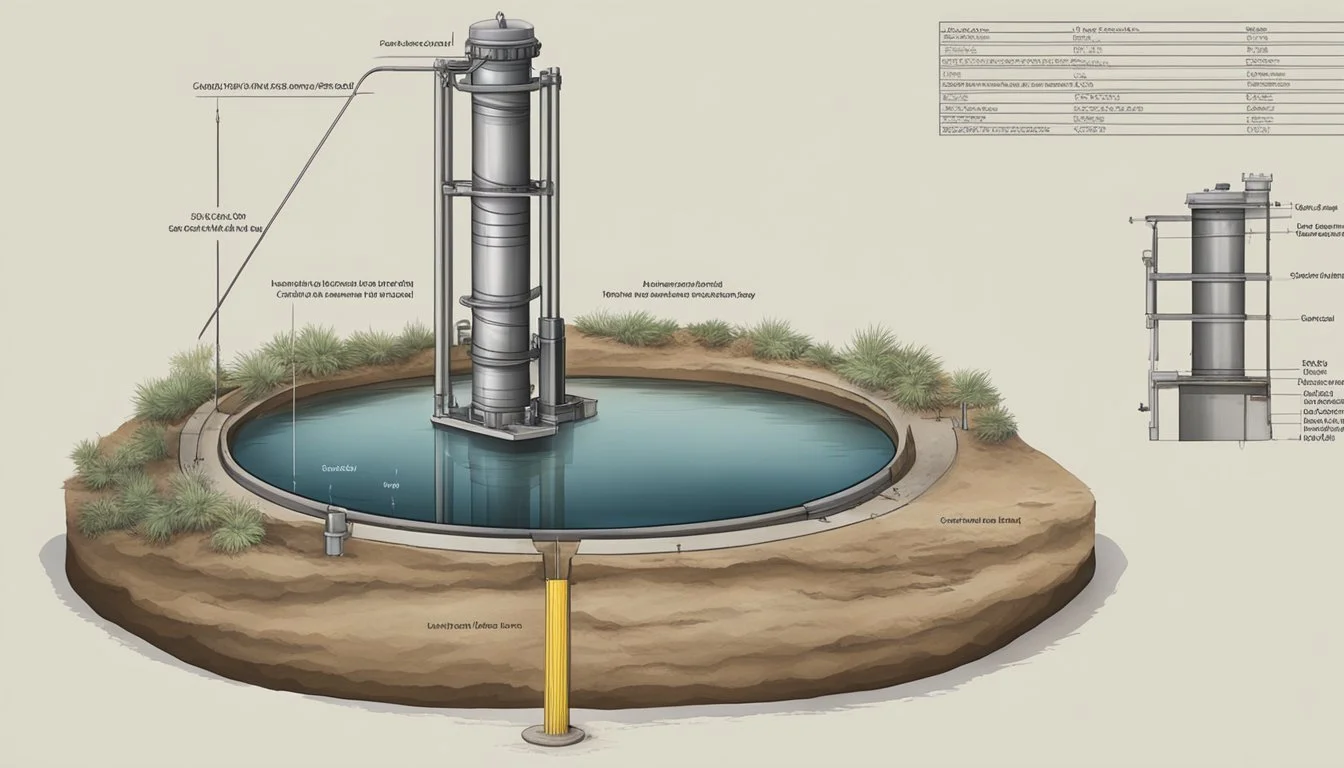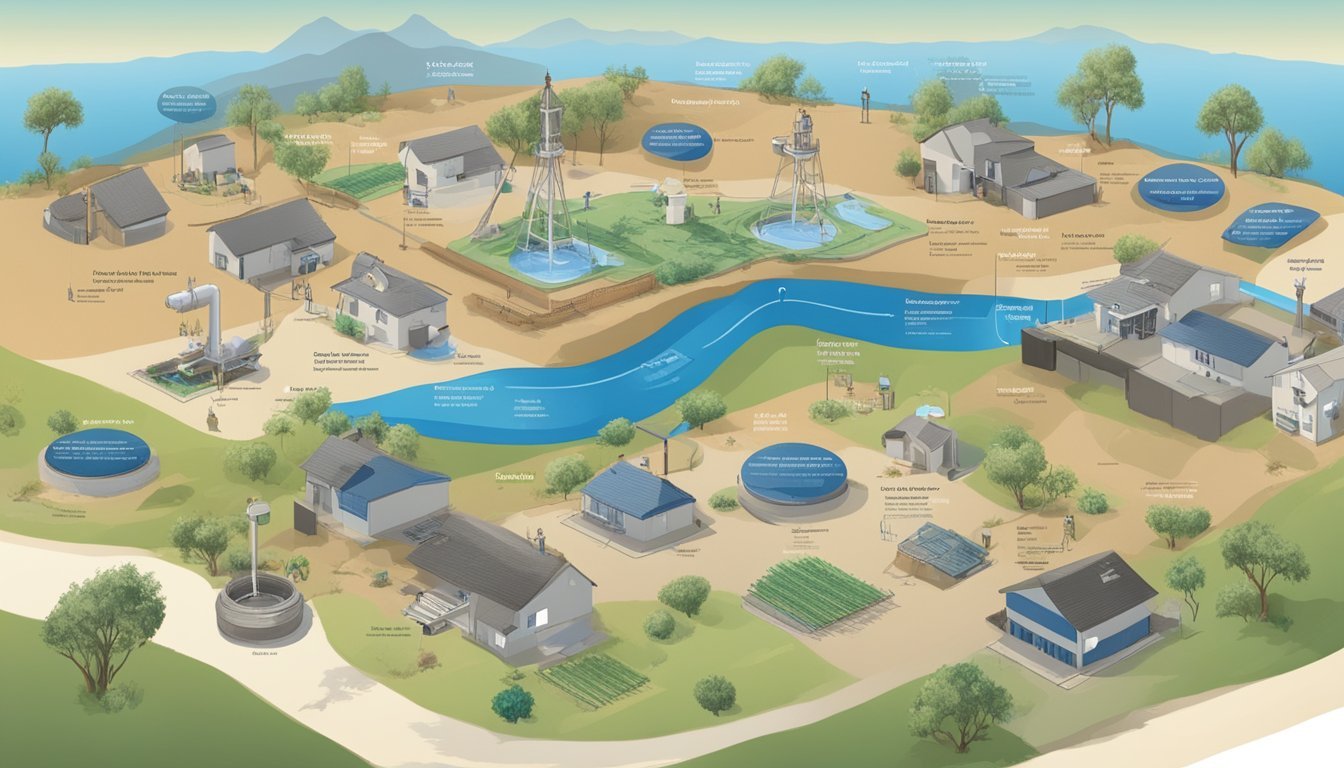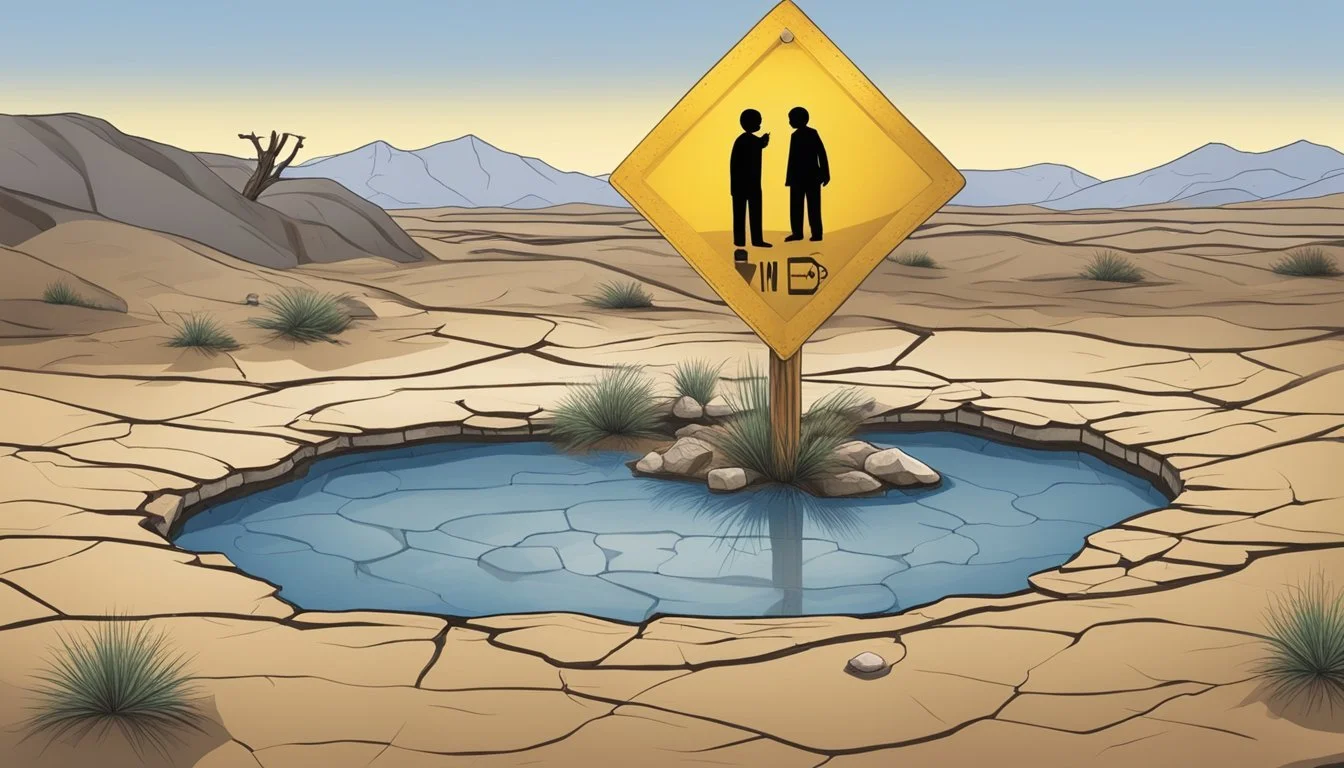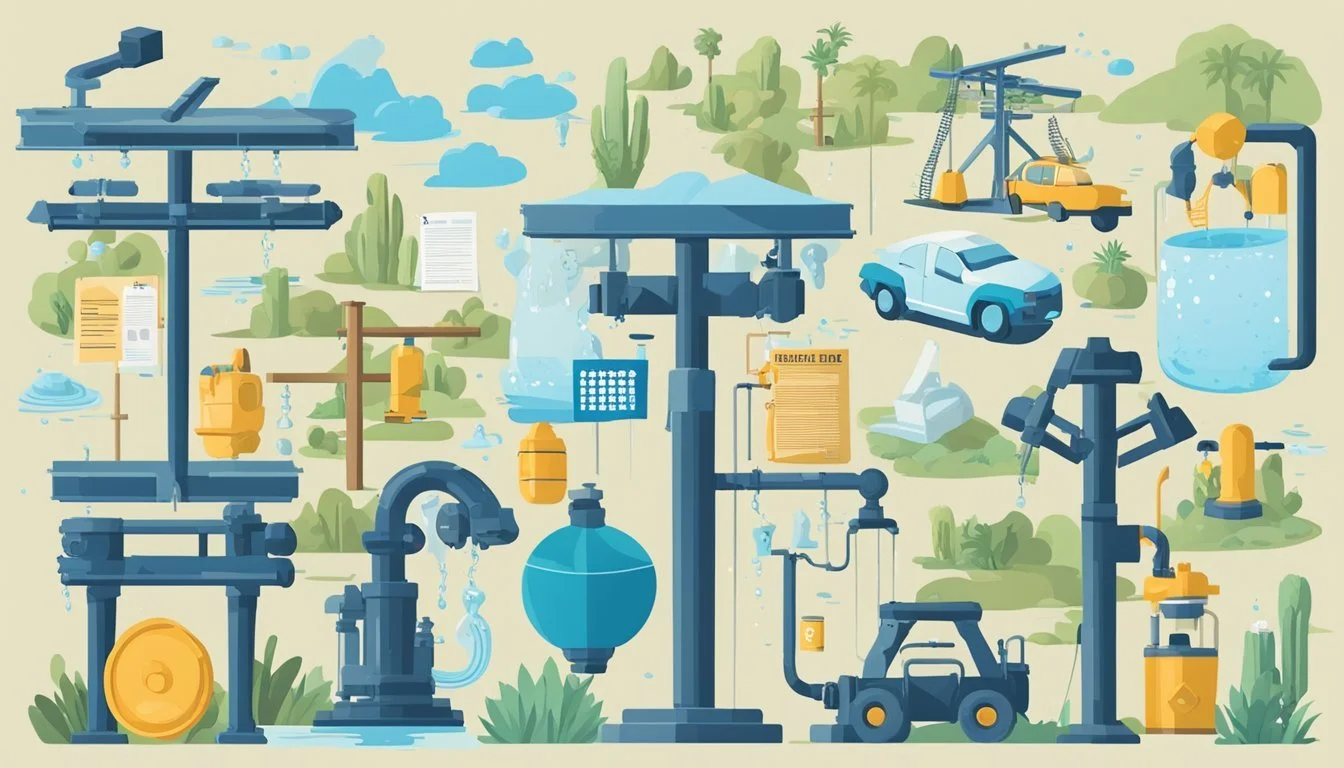California Water Well Regulations
Understanding the Legal Framework
California is renowned for its comprehensive water resource management, a task that has grown increasingly complex due to the state's vast agricultural interests, growing population, and environmental conservation needs. As part of its hydrological stewardship, California has established a set of regulations for the construction, maintenance, and use of water wells—critical structures that tap into the state's groundwater supplies. These regulations are designed to ensure that water wells are constructed and operated in a manner that protects the groundwater quality and ensures sustainable use of this vital resource.
The Department of Water Resources outlines the legal framework and technical specifications in its publication known as Bulletin 74, which serves as the benchmark for well standards in California. Local jurisdictions may enforce these standards rigidly or adopt more stringent measures depending on the needs of their area. Moreover, the comprehensive regulations take into account not only water well construction but also the monitoring and potential impacts of wells on the environment, including issues like groundwater depletion and contamination.
California's well regulations reflect a proactive approach to groundwater management, where an estimated two million water wells are in operation. These wells vary significantly in their design—from shallow, hand-dug wells to sophisticated large-production wells drilled to great depths. The Statewide Groundwater Management program oversees the construction of new wells, ensuring they meet contemporary standards that support both the state’s water supply needs and its environmental responsibilities.
Legal Framework and Regulatory Agencies
California's water well regulations are underpinned by a comprehensive legal framework and managed by various regulatory agencies to ensure the sustainable use and quality of the state's groundwater resources. These regulations are primarily enforced through the collaborative efforts of state and local authorities.
State Water Resources Control Board
The State Water Resources Control Board (SWRCB) operates under the California Environmental Protection Agency (EPA) to protect water quality and resources. SWRCB implements policies pertaining to drinking water and groundwater protection, as defined within California's Water Code and Health and Safety Code. It is responsible for overseeing the adherence to water well standards and managing the drilling, operation, and maintenance of wells throughout the state.
Sustainable Groundwater Management Act
Under the Sustainable Groundwater Management Act (SGMA), enacted in 2014, California mandated that groundwater supplies be managed sustainably by local agencies. This act requires the formation of Groundwater Sustainability Agencies (GSAs) responsible for developing and implementing Groundwater Sustainability Plans to prevent over-extraction and depletion of groundwater basins.
Local Agencies and Enforcing Authority
Local agencies, as defined in state law, work in conjunction with the SWRCB to administer and enforce water well regulations. These agencies are authorized to adopt and enforce their own ordinances, provided they meet or exceed state standards. The enforcing agency typically has the authority to issue permits, conduct inspections, and oversee the construction and destruction of wells, maintaining compliance with both the California Water Code and related health regulations.
Well Construction and Standards
California's approach to water well construction and maintenance is precise, mandating adherence to established standards to safeguard groundwater quality. The state's regulatory framework specifies materials, techniques, and design requirements aimed at preventing contamination.
California Well Standards (Bulletin 74)
California has set forth well standards known as Bulletin 74. These guidelines dictate minimum standards for the construction, monitoring, and modification of water wells. Bulletin 74's comprehensive statutes serve to protect both the groundwater and the structure of the wells themselves.
Construction Materials and Techniques
Materials used in well construction must be durable and resistant to corrosion and degradation. Common materials include stainless steel and PVC for casing, as well as bentonite clay or concrete for sealing material. Proper techniques are crucial in handling different geological formations, such as sand, to avoid contaminants entering the annular space between the casing and the borehole.
Well Design and Casing
Well design must account for the specific conditions of the site, ensuring that the well casing is appropriately sized and securely installed to isolate groundwater from possible contaminants. The well must be sealed from the annular space up to the surface to prevent direct entry of pollutants. The design and casing process must align with the California Well Standards, particularly in relation to the specific diameter and depth suitable for different types of wells.
Groundwater and Aquifer Protection
California's regulations for the protection of groundwater and aquifers are robust, aiming to prevent contamination and ensure the long-term sustainability of these vital water sources. These measures are critical in safeguarding not only the water quality but also the availability of groundwater resources for various uses, including those by vulnerable communities.
Contamination and Pollution Control
To protect groundwater from contamination, the Department of Water Resources establishes stringent well standards. This includes guidelines on well location and construction to prevent pollutants from entering groundwater zones. Local authorities enforce these regulations, which are crucial for preventing the degradation of groundwater basins.
Aquifer Recharge and Sustainability
Ensuring the sustainability of aquifers is paramount to maintaining California's groundwater resources. Measures such as controlled aquifer recharge, which is the process of replenishing groundwater basins, play a significant role. Water monitoring activities are in place to track the health of aquifers and to manage the extraction of water to maintain a balance between usage and replenishment.
Dry Well Management
Proper management of dry wells is essential to protect groundwater resources. Dry wells that are no longer in use must be sealed properly to prevent them from becoming conduits for surface contaminants. The regulatory framework provides for the closure of dry wells when they can no longer support aquifer recharge, thereby preventing potential hazards to groundwater quality.
Well Operation, Maintenance, and Monitoring
In California, the operation, maintenance, and monitoring of water wells are critical for ensuring sustainable groundwater resources, protecting public water systems, and supporting the agricultural industry. These measures help prevent over-pumping, maintain water quality, and track water levels, particularly in sensitive areas such as the San Joaquin Valley and the Delta.
Water Quality Testing and Reporting
Public water supply wells must undergo regular water quality testing to ensure the safety of the water for consumption. Parameters tested include contaminants like nitrates, common in agricultural runoff. Local authorities may impose additional testing requirements. Results must be reported to state agencies to comply with health standards.
Frequency of Testing: Depending on the location and type of well, testing can be annual or more frequent.
Reporting Channels: Tests results are usually submitted electronically to the relevant state department.
Dry household wells also need testing, although the frequency and parameters may vary. Private wells are not regulated by federal standards but by local health departments.
Well Performance and Pumping Limits
Setting and enforcing pumping limits helps in the prevention of significant drops in water levels. These limits are vital in areas, such as the San Joaquin Valley, where intensive agriculture necessitates substantial groundwater pumping.
Pump Efficiency: Regular maintenance checks ensure that pumps operate at optimal levels.
Permit Requirements: Well operators must adhere to permitted extraction volumes.
Agricultural stakeholders and water managers collaborate for the sustainable use of water to prevent the depletion of groundwater resources.
Groundwater Monitoring Initiatives
Groundwater monitoring is instrumental in managing California's water resources, especially given the severe droughts affecting the state.
Initiative Zones: Programs are typically more intensive in drought-prone areas, like the Delta region.
Data Collection: This integrates various types of data, including readings from monitoring wells and remote sensing technology.
Statewide initiatives, like the Sustainable Groundwater Management Act (SGMA), mandate the formation of local Groundwater Sustainability Agencies (GSAs) that oversee groundwater monitoring efforts and enforce pumping limits to mitigate the effects of groundwater depletion.
Well Decommissioning and Destruction
California enforces strict regulations on the decommissioning and destruction of water wells to protect groundwater resources. These regulations ensure that unneeded wells are properly sealed and do not become conduits for contamination.
Procedures for Well Destruction
The California Department of Water Resources outlines specific procedures for the destruction of water wells. To start, a thorough inspection is required to identify the well's structure and condition. Afterwards, the appropriate destruction methods are determined, which generally include physical demolition and removal of well casing and securing the borehole with sealing material.
Sealing Abandoned Wells
Sealing material plays a crucial role in the process of decommissioning wells. High-quality, impermeable materials such as neat cement grout or bentonite clay slurry are used to fill the entire depth of the abandoned well, preventing the migration of pollutants and safeguarding the surrounding groundwater.
Dealing with Obsolete Infrastructure
Obsolete well infrastructure, which includes both water and monitoring wells, must be handled with care. The destruction protocol demands the removal of all pumps, pipes, and debris, followed by proper disposal or recycling. After clearing the site, it undergoes a destruction sequence similar to that of regular water wells to eliminate any potential hazards and restore site integrity.
Permits, Documentation, and Compliance
California's well regulations necessitate a thorough approach to the permitting, documentation, and compliance processes. These steps ensure the protection of groundwater resources and adherence to state guidelines.
Well Permit Application Process
The initial step in the construction of a water well in California involves submitting a well permit application to the relevant local or state authority. Groundwater Sustainability Agencies (GSAs) or local agencies review applications to ensure proposed well activities align with sustainable groundwater management practices. A typical application includes detailed plans for the well's design, location, construction, intended use, and potential impacts on the environment and surrounding water resources.
Verification and Record Keeping
Once a well permit is granted, entities such as the Community Water Center may monitor the process to determine if the well's construction aligns with California's health and safety standards. Verification is a key step, confirming that the well meets the minimum standards. Local jurisdictions mandate strict record-keeping requirements, which include documenting the materials used, construction steps taken, and the professionals involved in the well's construction process.
Regulatory Compliance and Inspections
Regular inspections and oversight are critical components of maintaining regulatory compliance. California's Department of Water Resources or local enforcement agencies conduct inspections to ensure that well construction, modification, and abandonment operations comply with the DWR Bulletin 74 standards or local statutes that meet or exceed these standards. Inspections focus on confirming that the well does not contaminate groundwater, is properly sealed and developed, and that any changes like rehabilitation or deepening abide by the state regulations.
Specialized Well Types and Considerations
In California, regulations governing the construction, operation, and maintenance of wells are tailored to their specific uses and the resources they tap into. These specialized well types often have unique considerations due to the nature of the substances they extract or manage.
Oil, Gas, and Geothermal Wells
Oil, gas, and geothermal wells are heavily regulated due to the materials they handle and their environmental impact. For oil and gas wells, strict guidelines are in place to prevent contamination and ensure safe operation. The construction of geothermal wells, utilized for harnessing the Earth's heat, must account for temperature and pressure standards to maintain integrity. More information can be found on the Well Standards - Department of Water Resources.
Domestic and Irrigation Wells
Domestic wells supply water for household use and thus must meet sanitary standards to ensure water quality. In contrast, irrigation wells prioritize volume and sustainability for agricultural use. Both types of wells need to be constructed at a distance from potential contaminants, with domestic well casings reaching at least 25 feet deep in some regions, such as San Diego County. Relevant construction details can be further explored in the Comprehensive Guide to Water Wells.
Injection and Excavation Wells
Injection wells serve to reintroduce water or other fluids into the earth, often for purposes of disposal or hydraulic fracturing. These wells require careful monitoring to prevent seismic activity and contamination of aquifers. Excavation wells, or vertical wells used in the excavation process, manage both the structural and environmental concerns associated with the removal of earth materials. Proper sealing and disposal practices are essential for these types of wells, with additional insights found on the Wells - Department of Water Resources site.
Environmental and Public Health Impacts
California's water well regulations address a nexus of issues stemming from environmental variables and public health concerns. In a state that grapples with water scarcity and the effects of climate change, these regulations are crucial for ensuring the health and safety of its communities.
Water Scarcity and Drought Effects
In California, drought conditions have led to significant water scarcity, especially in the Central Valley. Groundwater depletion is a critical issue as the demand often exceeds the recharge rate, causing a decline in water tables. This phenomenon has vast implications for agriculture, household usage, and ecological systems. The Community Water Center recognizes these challenges, advocating for sustainable management of these vital resources.
Climate Change and Water Resource Management
Climate change has exacerbated water management challenges in California. It affects precipitation patterns and increases the likelihood of severe droughts, which in turn puts pressure on groundwater supplies. The Department of Water Resources is tasked with adapting to these changes, ensuring that the state's water well construction standards are robust enough to protect against these impacts. Assemblymember Steve Bennett has also been active in addressing water-related climate issues at the legislative level.
Public Health and Community Impact
Unsafe drinking water disproportionately affects vulnerable communities, often leading to public health crises similar to those seen in Flint, Michigan, and Newark, New Jersey. Regulations are implemented to prevent such occurrences by maintaining strict water quality standards. Service connections in out-of-compliance systems pose risks to public health, necessitating vigilant monitoring and enforcement of water quality standards to ensure safe drinking water for all Californians.
Technical and Material Specifications
California’s water well regulations demand meticulous attention to the technical and material aspects to ensure the structural integrity and function of wells. High standards are set for material suitability, and stringent procedures govern excavation and sealing to protect groundwater.
Suitability of Materials for Well Construction
The quality of materials used in well construction directly impacts the longevity and safety of the wells. The Department of Water Resources stipulates that all materials must be durable, chemically inert, and non-toxic to avoid contamination of the water supply. For instance, casing materials should be robust enough to withstand forces during installation and the pressures they will encounter underground. These include both physical pressures from surrounding rock or soil and hydrostatic pressures from within the well. Stainless steel or PVC are commonly used for casing due to their resistance to corrosion.
Standards for Excavation and Sealing
Excavation processes are guided by precise standards that govern the diameter and depth of the wells. Factors such as the purpose of the well, local geology, and the expected yield play a critical role in these parameters. Proper sealing is imperative to prevent contaminants from entering the aquifer. Sealing materials often include bentonite clay or concrete-based substances, chosen for their impermeable qualities. Application of sealing materials must create a watertight barrier that withstands subsurface pressures and prevents the migration of lower-quality water between different strata.
Frequently Asked Questions
This section answers common inquiries on California's water well regulations, providing clear and precise information about the recent updates, legal requirements, and resources for well construction and modification.
What are the updated water well regulations in California as of Bulletin 74-90?
California has updated its water well standards to address advancements in well construction and technology. The Department of Water Resources offers comprehensive guidance through Bulletin 74-90.
How can I access California's well standards and regulations documentation?
Documentation of California's well standards and regulations is accessible through the Department of Water Resources website, where Bulletin 74 and other relevant resources are readily available for download.
What are the legal requirements for drilling a new water well in California?
Legal requirements for drilling a new water well in California include obtaining the necessary permits, following the mandated well construction standards, and ensuring compliance with the state's water rights policies. Detailed information can be found on the State Water Resources Control Board site.
Do I need a government permit to construct or modify a water well in California?
Yes, constructing or modifying a water well in California requires a permit from a local enforcement agency or from the Department of Water Resources to ensure compliance with all regulatory standards.
What is the minimum distance required between a new well and the property line in California?
The minimum distance required between a new well and the property line is specified in the California well regulations. For precise measurements and criteria, refer to the state's well standards documentation.
Where can I find the official map detailing water well locations across California?
The California Department of Water Resources maintains an official map detailing water well locations across the state, providing valuable information for researchers, planners, and the public.








